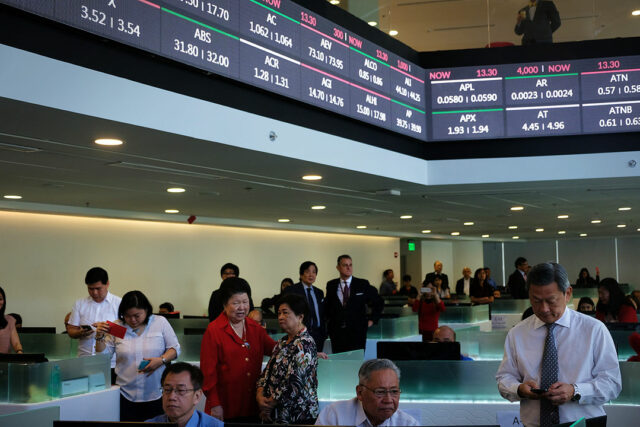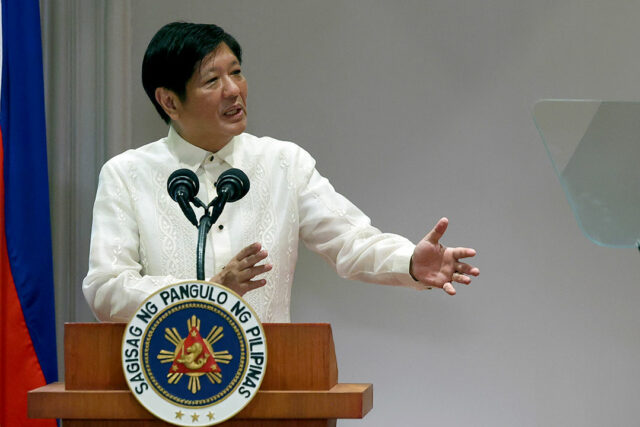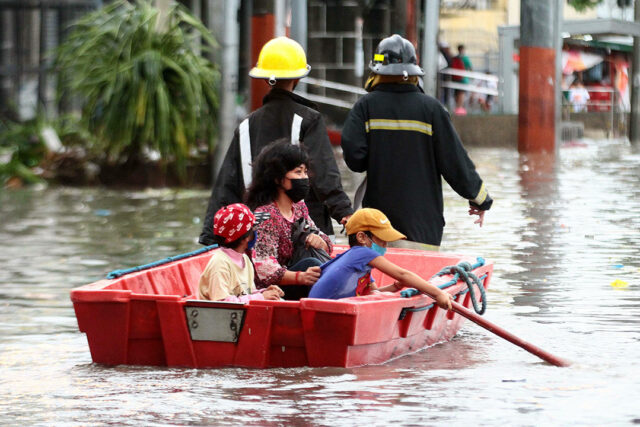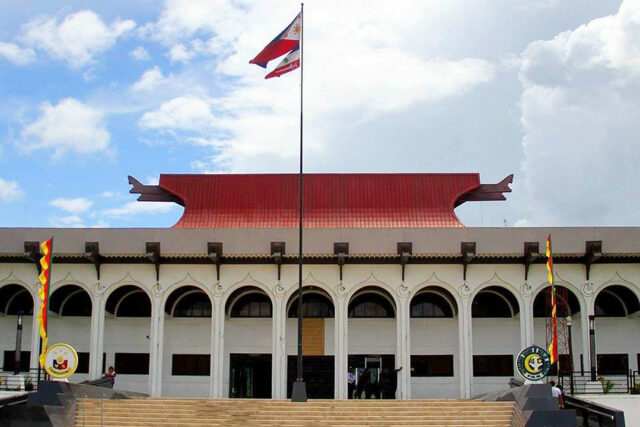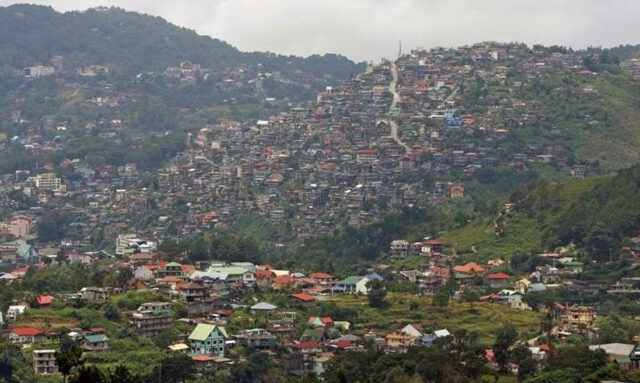Peso to stay rangebound
THE PESO is expected to trade sideways against the dollar this week following the surprise uptick in US consumer inflation in December.
The local currency closed at P55.911 versus the dollar on Friday, appreciating by 3.9 centavos from Thursday’s P55.95 finish, data from the Bankers Association of the Philippines’ website showed.
Week on week, however, the peso weakened by 21.1 centavos from its P55.70 close on Jan. 5.
The peso was better supported against the dollar following the faster-than-expected rise in US inflation, Security Bank Corp. Chief Economist Robert Dan J. Roces said in a Viber message.
The consumer price index (CPI) rose 0.3% last month after nudging up 0.1% in November, the Labor department’s Bureau of Labor Statistics said, Reuters reported.
In the 12 months through December, the CPI rose 3.4% after increasing 3.1% in November. Economists polled by Reuters had forecast the CPI would gain 0.2% on the month and climb 3.2% on a year-on-year basis.
Inflation averaged 4.1% in 2023, down from 8% in 2022.
Rizal Commercial Banking Corp. Chief Economist Michael L. Ricafort said core inflation in the US, which eased to 3.9% year on year from 4% in November, could still justify Fed rate cuts in the second half of the year.
Market players are still pricing in rate cuts of more than 150 basis points this year, he said.
The peso appreciated on Friday after President Ferdinand R. Marcos, Jr. announced a new Finance chief, Mr. Ricafort added.
Former lawmaker Ralph G. Recto took his oath as Department of Finance secretary on Friday. He replaced Benjamin E. Diokno, who was sworn in as a member of the central bank’s Monetary Board.
Mr. Recto was previously a member of the country’s economic team as chief of the National Economic and Development Authority in 2008.
For this week, Mr. Roces said the peso could remain “range-bound” before US data on retail sales and the release of the Fed Beige Book, which a report on economic conditions in the US.
Market players will also look at the latest remittances and overall balance of payments data to be released by the Philippine central bank this week, Mr. Ricafort added.
He expects the local unit to move from P55.60 to P56.10 per dollar this week. — Keisha B. Ta-asan with Reuters
Stocks may hold on to gains as mart awaits leads
PHILIPPINE SHARES are expected sustain their upward trend this week, but the lack of strong catalysts could prevent the market from rising further, analysts said.
The Philippine Stock Exchange index (PSEi) improved by 29.45 points or 0.44% to end at 6,643.18 on Friday, while the broader all shares index rose by 10.85 points or 0.31% to close at 3,506.61.
Week on week, the PSEi climbed by 13.54 points or 0.2% from its 6,629.64 close on Jan. 5.
“The local bourse held on to slight gains while waiting for stronger catalysts to reinforce the market’s upward momentum,” online brokerage firm 2TradeAsia.com said in a market report.
“The PSEi gained for the second straight week of the new year, higher for the fourth week in five weeks, somewhat catching up with the much larger gains posted by the US and other global stock markets since 2023,” Rizal Commercial Banking Corp. Chief Economist Michael L. Ricafort said in a Viber message.
Philippine shares could continue to rise this week, Mr. Ricafort said.
“The upward trend in the PSEi could continue after rising for almost all days from the start of 2024… amid the recent gains in the US stock markets to among two-year highs and near record highs,” he said.
On Friday, Wall Street stocks closed nearly flat after moving between modest gains and losses during the session, Reuters reported. The Dow Jones Industrial Average fell 118.04 points or 0.31% to 37,592.98. The S&P 500 gained 3.59 points or 0.08% at 4,783.83; and the Nasdaq Composite rose 2.58 points or 0.02% to 14,972.76.
The US market will be closed on Monday for the Martin Luther King, Jr. holiday.
“Investors are expected to watch out for positive catalysts. Without such, sustaining the market’s climb [this] week could be difficult. Meanwhile, the dampened Federal Reserve rate cut hopes following the US’ December 2023 inflation print and worries over the tensions in the Middle East may weigh on sentiment,” Philstocks Financial, Inc. Senior Research Analyst Japhet Louis O. Tantiangco said in a Viber message.
Regina Capital Development Corp. Head of Sales Luis A. Limlingan said in a Viber message that the market’s movement will be “data dependent,” with the PSEi expected to consolidate at the 6,600 level.
“Some key economic events this week will be China’s gross domestic product, US consumer sentiment, and retail sales [data],” Mr. Limlingan said.
Meanwhile, Mr. Ricafort put the PSEi’s immediate minor support at 6,390-6,500 and immediate major support at 6,210-6,300, while Mr. Tantiangco placed its major support at 6,400 and major resistance at 6,700.
For its part, 2TradeAsia.com put the PSEi’s support at 6,550 and resistance at 6,700-6,800.
“[The] PSEi is building a clearer technical runway towards 6,800… In the short term, improving macroeconomic factors plus confirmation of earnings should lubricate the ascent and provide opportunities to day range trade,” the online brokerage said. — R.M.D. Ochave
Economic reforms via ‘Cha-cha’ may be futile without political changes
By Kyle Aristophere T. Atienza, Reporter
POLITICAL analysts on Sunday urged lawmakers to also push political reforms aside from easing economic restrictions in the 1987 Constitution, saying economic changes would not be effective without fixing the country’s weak political structure.
“If we open up the economy, we should also strengthen our agencies that will be responsible for ensuring that a more open economy will really redound to the benefit of the people,” Edmund Tayao, who teaches at the San Beda Graduate School of Law, said by telephone.
Congress should also strengthen domestic institutions and make the country’s Charter responsive to emerging threats, he said.
“Our political institutions do not have accountability,” Mr. Tayao said. “Anyone who has money to burn can just come to the Philippines, finding it easy to start a business here whether it’s absolutely legitimate or not. Economic reforms should include political reforms.”
In December, Speaker Martin G. Romualdez said lawmakers would focus on the “very prohibitive” economic provisions of the Constitution as part of constitutional reforms this year, a year before the midterm elections.
It would be difficult to get a consensus on economic reforms, much less implement them, if the government failed to ensure that Philippine political institutions are responsive to the needs of the people, Randy P. Tuaño, dean of the Ateneo de Manila University School of Government, said in a Facebook Messenger chat.
“It would be good if we have economic reforms,” he said, “Our governance institutions should be responsive to any programs that would allow these sectors to bounce back.”
He cited the late President Fidel V. Ramos’ Philippines 2000 program for economic liberalization, which he said was accompanied by social and political reforms.
“This is the only Constitution compared with many constitutions around the world where the key provisions always end with ‘as may be provided by law,’” Mr. Tayao said. “Compared with the many Constitutions around the world, we probably have the most perfect set of social justice provisions, but these cannot be implemented in the absence of enabling laws.”
For example, the 1987 Charter provides for the ban of political dynasties and labor-only contracting, but these need legislation.
Charter change (“Cha-cha”) has gained public attention after the airing last week of a TV commercial demonizing the legacies of a People Power uprising that toppled the regime of the late dictator Ferdinand E. Marcos.
The pro-Cha-cha ad was aired amid reports of “vote buying” for a people’s initiative to change the Constitution, which lawmakers including presidential sister Senator Maria Imelda “Imee” R. Marcos want to probe.
Human rights group Karapatan said the “people’s initiative” was pursued after “Cha-cha” attempts last year via the usual avenues of constitutional convention or constitutional assembly failed.
The “people’s initiative,” which has been tagged as “politicians’ initiative,” is seen as a shortcut to Charter change, with people in poor communities being asked to sign blank sheets of paper in exchange for money,” it said in a statement.
“Such accounts strongly remind us of how the 1973 Philippine Constitution was supposedly ratified via ‘viva voce’ just months into the declaration of Marcos Sr.’s martial rule through hastily called barangay assemblies,” it added.
Terry L. Ridon, a former lawmaker and convenor of think tank InfraWatch PH, urged Congress to start proceedings on its proposal to reform the economic provisions of the charter to allow a full discussion.
“It should invite all interested parties to present their positions on whether economic amendments to the Charter should proceed,” he said. “It should distance itself from other initiatives that seem to spoil the focus on purely economic amendments, such as groups that funded the controversial TV ad.”
Mr. Romualdez last month said they seek to amend the Charter through a people’s initiative, allowing the public to decide whether the Senate and House should vote separately or as one.
There had been attempts to revise the Constitution and shift to a federal type of government under ex-President Rodrigo R. Duterte, during whose term Congress passed changes to 85-year-old Public Service Act to allow full foreign ownership in domestic shipping, telecommunications, shipping, railways and subways, airlines, expressways and tollways, and airports.
In 2021, Congress approved the Singapore-inspired Corporate Recovery and Tax Incentives for Enterprises Act, which cut the corporate income tax on domestic and foreign corporations to 25% from 30%.
Mr. Tayao said the Constitution should respond to economic and security threats.
“When the Constitution was drafted in 1987, we were responding to one single issue, which was the dictatorship,” he said. “There was no comprehensive view. Now, we are still struggling with labor-only contracting, which the Constitution should have already corrected.”
“The Constitution also supposedly has very meaningful provisions as far as indigenous people and local governments are concerned, but again, the same problems with decentralization and indigenous people remain,” he added.
“The political provisions are the ones that are really problematic.”
The Charter should also be attuned to emerging geopolitical threats, he said, citing tensions with China. “As far as the national territory is concerned, it requires a reformulation or rewording so we can improve our strategies, whether it’s on the West Philippine Sea issue or something else,” he said.
Marcos flies to Brunei for Prince Abdul Mateen’s wedding
PHILIPPINE President Ferdinand R. Marcos, Jr. flew to Brunei on Saturday night to attend the wedding of Prince Abdul Mateen and his fiancée, according to the presidential palace.
The President was invited by Brunei’s Sultan Hassanal Bolkiah, the Presidential Communications Office (PCO) said in a statement at the weekend. He was set to come home on Sunday.
“The President’s attendance at the royal wedding reaffirms the strength of the bilateral ties between the Philippines and Brunei,” it added.
The palace said Mr. Abdul is the sixth in the line of succession to the throne. His fiancée Yang Mulia Dayang Anisha Rosnah Binti Adam is a businesswoman who owns a fashion brand and tourism company.
Diplomatic relations between the Philippines and Brunei, which is home to more than 22,000 overseas Filipino workers, started in 1984. — Kyle Aristophere T. Atienza
Philippines to build port on Nanshan Island in Spratlys
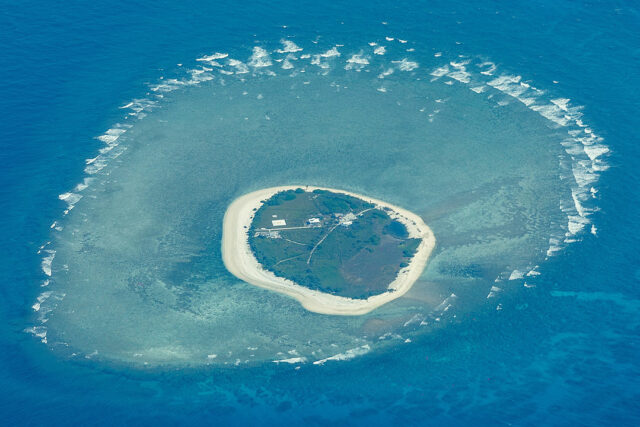
CONGRESS has earmarked P800 million to build a new fishing port on Nanshan Island in the South China Sea to encourage civilian settlements, a congressman said on Sunday.
The port is separate from the P1.5 billion allotted for the expansion of an airport on Thitu Island, Makati Rep. Luis Jose Angel N. Campos, Jr., vice chairman of the House of Representatives committee on appropriations, said in a statement.
“The shelter port and the airport expansion projects give substance to Speaker Martin Romualdez’s pledge to develop the Kalayaan Island Group in a bid to encourage civilian settlements there,” he added.
Mr. Campos said the port could be used by Filipino fishermen as a shelter amid increasing tensions with China.
Funding for the Nanshan shelter port is included in the Transportation department’s 2024 maritime transportation infrastructure program.
The Philippines has been unable to enforce a United Nations-backed arbitration court ruling in 2016 that voided China’s claim to more than 80% of the South China Sea and has since filed hundreds of protests over what it calls encroachment and harassment by China’s coast guard and its vast fishing fleet.
China reclaimed about 3,200 acres (1,295 hectares) of land in the South China Sea from 2013 to 2016, according to US think tank Center for Strategic and International Studies.
The Philippine Foreign Affairs department has urged China to stop what it called the “militarization of the South China Sea.”
In December, Senate President Juan Miguel F. Zubiri said an additional P10.47 billion had been earmarked to upgrade the Philippines’ defense capacity and strengthen its presence in the South China Sea.
Nanshan Island, which the Philippines calls Lawak, is the eighth-largest natural island in the Spratly Islands, and the fourth-largest of the Philippine-occupied islands. It has an area of 7.93 hectares and is 158 kilometers east of Thitu Island, which the Philippines calls Pag-asa.
About 200 Filipinos live on Pag-asa Island, where the government set up a municipality under Palawan province in 1978. — Beatriz Marie D. Cruz
Manila keeps One China policy after Taiwan polls
THE PHILIPPINES has reaffirmed its commitment to adhere to the One China policy after Taiwan’s presidential elections concluded over the weekend, the Philippine Department of Foreign Affairs (DFA) said on Sunday.
“The Department of Foreign Affairs reaffirms the principles contained in the Joint Communique of the Government of the Republic of the Philippines and the Government of the People’s Republic of China signed by President Ferdinand E. Marcos and Premier Zhou Enlai on 9 June 1975,” the DFA said in a statement sent to reporters in a WhatsApp message.
“The Philippines is committed to its One-China Policy,” it said.
Under the agreement, the Philippines and China would agree to settle disputes by peaceful means.
William Lai Ching-te, who represented Taiwan’s ruling Democratic Progressive Party, won the race, garnering 40.1% of votes. He is Taiwan’s incumbent vice president.
On Saturday, China’s Taiwan Affairs Office spokesperson Chen Binhua said the elections would not “change the basic landscape and development trend of cross-Strait relations.”
Taiwan has been independent from China since 1949, but Beijing still claims the island is part of its territory and views Taiwan as a “renegade province.”
Tensions between the Philippines and China have worsened amid Beijing’s continued attempts to block Philippine resupply missions at Second Thomas Shoal.
In April last year, Chinese Ambassador Huan Xilian asked the Philippines to oppose Taiwan’s independence if the country “cares genuinely” about the welfare of more than 150,000 overseas Filipino workers (OFWs) there. — John Victor D. Ordoñez
Makati grants P21.5-M aid to LGUs
THE MAKATI City government is providing P21.5 million to 36 local government units (LGUs) in Mindanao affected by strong earthquakes and flooding late last year.
In a statement, Makati said it has earmarked P8.75 million for 17 municipalities in Northern and Eastern Samar severely affected by shear line and low-pressure areas in November.
The city is also allocating P12.5 million to 18 localities in Surigao del Sur adversely affected by the 7.4 magnitude earthquake on Dec. 2.
The municipality of Glan in Sarangani Province, which was affected by the 6.8 magnitude earthquake on Nov. 17, will receive P250,000 in financial assistance.
“We hope that the financial assistance from the city will help them (LGUs) recover and rebuild their communities,” Makati City Mayor Marlen Abigal Binay-Campos said.
She urged other cities to invest in infrastructure resilient to natural disasters. — John Victor D. Ordoñez
Jeepney drivers to stage protest
TRANSPORT group Manibela will be mounting a continuous nationwide transport protest the Public Utility Vehicle Modernization Program (PUVMP) beginning on Tuesday.
In Metro Manila, the group will be rolling out a protest caravan from the University of the Philippines-Diliman campus in Quezon City to Welcome Rotonda at the boundary of Manila, Manibela president Mar S. Valbuena said in a media advisory on Sunday.
Instead of a transport strike, jeepney drivers and operators will join the caravan that plans to proceed to Mendiola and ultimately reach the Supreme Court on Taft Avenue to call for a stop to the implementation of the PUVMP.
To recall, the Land Transportation Franchising Regulatory Board (LTFRB) has issued new guidelines allowing unconsolidated public utility vehicles to continue operations until Jan. 31.
The LTFRB estimated that about 38,000 jeepney drivers could lose their jobs starting February once the PUVMP is in full effect.
Approximately 30% of Metro Manila units have been consolidated, while routes near 50%, falling short of the 65% target, according to the Department of Transportation.
IBON Foundation has estimated that fares would increase to P45-P50 within the next five years due to the PUVMP from the current P15 minimum fare on modern jeepneys. — Ashley Erika O. Jose
‘Cha-cha’ ad fund probe sought
THE HOUSE minority bloc is calling for an investigation into a television advertisement advocating the amendment of the 1987 Constitution, aiming to determine whether or not government funds were utilized and if the campaign serves to peddle misleading partisan agenda.
“The public demands to know the source of funds of the paid advertisement and the overall “Cha-cha” (Charter change) campaign — public coffers or money from foreigners trying to change our Constitution for their interest,” the congressmen said in House Resolution No. 1541.
They said the probe must look into the intention of the advertisement, pointing out that it “misleadingly imputes that the Constitution is the cause of corruption and poverty in the country.”
The group People’s Initiative for Modernization and Reform Action (PIRMA) said public funds were not used in the television advertisement, noting that its funding came from the Gana, Atienza, Avisado Law Offices.
The advertisement used the catchphrase “EDSA-pwera” and alleged that farmers, students, and local businesses are disadvantaged by the Charter, which was ratified following the EDSA People Power Revolution that ousted former president Ferdinand E. Marcos, father and namesake of the current Chief Executive.
House Speaker Ferdinand Martin G. Romualdez, a cousin of President Ferdinand R. Marcos, Jr., has revived calls to amend the Constitution to ease economic woes.
But according to the resolution of the minority bloc, an alleged signature campaign in exchange of aid and gifts has been making the rounds of certain villages and towns in Luzon.
“Such corrupt practice of taking advantage of poverty tramples the genuine essence of “people’s initiative,” it said.
Last week, Senator Maria Imelda “Imee” R. Marcos said that up to P20 million was offered to districts in several provinces that could deliver 20,000 signatures in favor of “Cha-cha.”
Albay Rep. Edcel C. Lagman also said that P100 was allegedly given to voters who would sign a petition in favor of “Cha cha” through a people’s initiative.
“This is a very organized and well-funded campaign,” Bayan Muna Chairman Neri J. Colmenares told a forum.
“You cannot use public funds for a people’s initiative…because [it] is a private initiative,” he said, claiming that government funds were allegedly being used in the signature campaigns. — Beatriz Marie D. Cruz
Bangsamoro ecozones backed
COTABATO CITY — Business groups and local leaders expressed support for the Bangsamoro government’s plan to establish new economic zones in the autonomous region and its 63 barangays in Cotabato province in Region 12.
On Sunday, the Bangsamoro Economic Zone Authority (BEZA) stressed the importance of creating “halal” trading hubs to boost commerce and trade in the region. In this context, “halal” refers to ethical and permissible business practices in Islam, governing transactions and food-related activities.
Three members of the 80-seat Bangsamoro parliament, lawyers Paisalin P. Tago, Deputy Speaker Nabil A. Tan, and physician-ophthalmologist Kadil M. Sinolinding, Jr., expressed readiness to draft regional laws supporting BEZA’s initiative.
Despite the previous challenges faced by the Bangsamoro Autonomous Region in Muslim Mindanao (BARMM) with a regional economic zone, Cotabato Gov. Emmylou T. Mendoza also advocated for economic zones in the 63 Bangsamoro barangays within her province.
Ms. Mendoza highlighted the collaboration among the provincial government, Moro National Liberation Front, Moro Islamic Liberation Front, police, and the Army’s 602nd Infantry Brigade to maintain order in the Special Geographic Area (SGA) of BARMM. “Our airport in M’lang municipality, large enough to accommodate big commercial planes, is also expected to operate soon, and that is closer to most SGA barangays than the Cotabato City airport in Maguindanao del Norte province. Airports are needed for economic zones,” she said.
She underscored the potential benefits for trading centers in municipalities in her province, where investors could establish capital-intensive businesses. She also noted the upcoming operation of the Mlang municipality airport, closer to the SGA barangays, emphasizing the need for airports in economic zones. — John Felix M. Unson
Baguio, Chinese city eye sisterhood
BAGUIO CITY — The cities of Baguio in the northern Philippines and Chongzuo in China have started talks towards forging twinning and sisterhood ties.
Last week, a delegation from the Philippine-Guangxi Commercial Association, Inc. serving as representatives of Chongzuo City visited Baguio City and interacted with the members of the Sister Cities Executive Committee that focuses on processes towards forging the sisterhood ties.
The delegation was composed of Executive Vice Presidents Zhao Fu’an and Feng Tao, Vice President and General Secretary Wei Shengbo, Sister City Ambassador Bo Tao Zheng, Administrative Officer/Coordinator Mary Alice S. Rumbaoa and Technical Working Staff Zhang Hailin, Iyu Zhanglu and Julieta Quinto.
Both Baguio and Chongzuo share common physical attributes such as being mountainous and hilly, with Baguio having only about 57 square kilometers compared to Chongzuo’s more than 17,345 km2 land area that borders with Vietnam.
Baguio City, a cultural hub in the Cordillera highland region, thrives on tourism, education, retail, and services, supported by agriculture and academic institutions. On the other hand, Chongzuo is shaped by Chinese culture, relies on agriculture, forestry, and ecotourism, contributing to the Guangxi Autonomous Region’s economic growth.
Chongzuo features rapid urban infrastructure development, while Baguio balances sustainable development and preservation, showcasing a mix of urban and rural areas with modern infrastructure. — Artemio A. Dumlao





